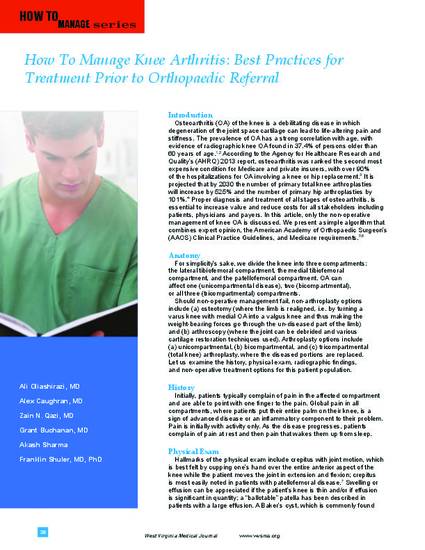
Osteoarthritis (OA) of the knee is a debilitating disease in which degeneration of the joint space cartilage can lead to life-altering pain and stiffness. The prevalence of OA has a strong correlation with age, with evidence of radiographic knee OA found in 37.4% of persons older than 60 years of age. According to the Agency for Healthcare Research and Quality’s (AHRQ) 2013 report, osteoarthritis was ranked the second most expensive condition for Medicare and private insurers, with over 90% of the hospitalizations for OA involving a knee or hip replacement. It is projected that by 2030 the number of primary total knee arthroplasties will increase by 525% and the number of primary hip arthroplasties by 101%. Proper diagnosis and treatment of all stages of osteoarthritis, is essential to increase value and reduce costs for all stakeholders including patients, physicians and payers. In this article, only the non-operative management of knee OA is discussed. We present a simple algorithm that combines expert opinion, the American Academy of Orthopaedic Surgeon’s(AAOS) Clinical Practice Guidelines, and Medicare requirements.

The copy of record is available from the publisher at http://www.wvsma.org/Journal/PastEditionsoftheJournal.aspx. Copyright © 2016 West Virginia State Medical Association. Reprinted with permission. All rights reserved.